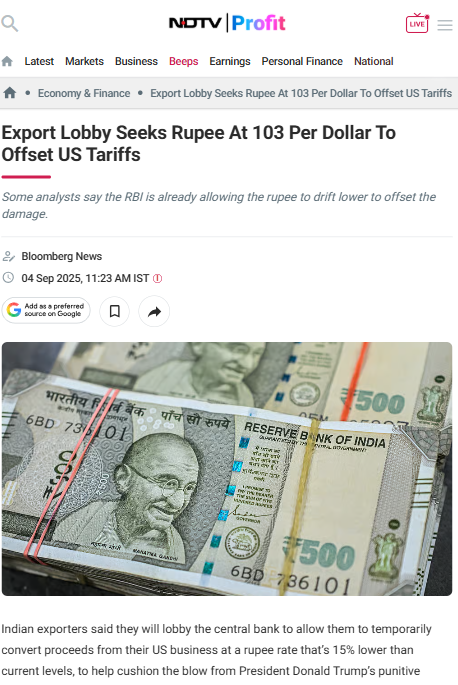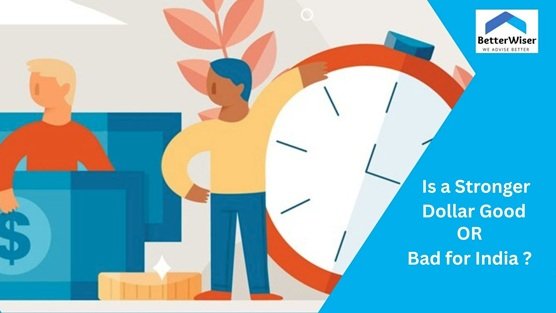Is a Stronger Dollar Good or Bad for India?
How US Tariffs Test Indian Exporters
Table of Contents
The Story of One Exporter
A few weeks ago, I sat with one of my clients, a gems and jewelry exporter. He has been in this business for years, exporting carefully crafted jewelry pieces to customers in the United States. Every month, he shipped around $100,000 worth of goods, running his operations with a healthy gross margin of 25–30%. His workers—mostly artisans and craftsmen—depended on this business for their livelihoods.
Then came the sudden tariff hike by the US on Indian goods. Overnight, his exports became costlier in the American market. Buyers who once relied on him started looking for cheaper options. His sales dropped by 40%. On the remaining 60%, his margins shrank to just 10%.
He told me quietly, “I had to let go of 25% of my staff. These are not just numbers—they are families, children’s school fees, and meals on the table.” His voice carried the fear of a man watching years of effort slip away. If this continues, he believes he may not be able to survive more than another 6–12 months. This is not just his story—it’s the story of hundreds of Indian exporters.

The Bigger Picture: Tariffs and Their Ripple Effect
When the US raises tariffs on Indian goods, two things happen:
- Indian products become more expensive in the US market.
- Exporters face a harsh choice. They can either lower prices to stay competitive or absorb the extra cost. Both options slash their margins.
And when margins shrink, it’s not just businesses that suffer. Job creation slows, incomes drop, and the larger economy feels the pressure. Small and medium businesses, which form the backbone of India’s export sector, are hit hardest.
The Dollar-Rupee Equation: Blessing or Curse?
At the same time, people often ask: “If the rupee is weaker against the dollar, shouldn’t exporters benefit?”
In theory, yes. When $1 equals ₹88, every dollar earned translates to more rupees at home. For exporters, this sounds like a gain. But in reality, it’s not so simple.
Let’s look at my client’s situation.
This table shows how tough things have become. Pre-tariff, he earned ₹8.5 lakh a month in profit. Post-tariff, he’s staring at a ₹5 lakh loss. Even with efficiency improvements, he just breaks even. Only if the rupee weakens significantly (say to ₹105 per dollar) can he hope to reach the 18% margin he needs for survival

Why This Matters for India
This isn’t just about one gems exporter. The US is one of India’s largest trading partners. When tariffs rise, the impact ripples through industries—textiles, leather, handicrafts, IT services, and more.
Each business forced to cut jobs affects workers’ families. Each factory that slows down reduces demand for raw materials, logistics, and allied services. And when small exporters shut down, the loss is not just economic—it’s social.
Our Perspective as a Financial Consultant
As a finance professional, I see two main paths for exporters in such situations:
- Improve Efficiency
- Cut waste and overheads.
- Reallocate manpower to focus on productivity.
- Use technology for cost savings.
My client already reduced costs by 3% by trimming staff, but this is not sustainable forever.
- Manage Forex Better
- Plan transactions to take advantage of currency swings.
- Use hedging tools to lock in better exchange rates.
- Explore markets where the dollar’s strength offers a cushion.
Even then, exporters need at least an 18% margin to stay afloat. Anything less puts survival at risk.
Each business forced to cut jobs affects workers’ families. Each factory that slows down reduces demand for raw materials, logistics, and allied services. And when small exporters shut down, the loss is not just economic—it’s social.
The Emotional Side
Numbers tell one story, but the human side is harder to measure. Behind every percentage drop in margin, there are workers—artisans, weavers, craftsmen—who lose jobs. There are families whose children’s education, healthcare, and daily needs are suddenly under threat.
When policymakers debate tariffs or currency rates, these people rarely make the headlines. But they are the real backbone of India’s export economy.
Final Thought
So, is a stronger dollar good or bad for India? The answer is—it depends. For some exporters, it offers relief. For others, like my client, it’s not enough to offset tariff shocks.
What India needs is not just to rely on a weak rupee but to focus on:
- Building efficiency in exportndustries.
- Supporting small businesses with smarterpolicies.
- Negotiating better trade terms.
- Helping exporters manage forex risks better.
Because if these steps aren’t taken, many exporters won’t be around to benefit from any future recovery.
In the end, the story of one gems exporter could become the story of many—and India cannot afford to lose them.
When policymakers debate tariffs or currency rates, these people rarely make the headlines. But they are the real backbone of India’s export economy.







